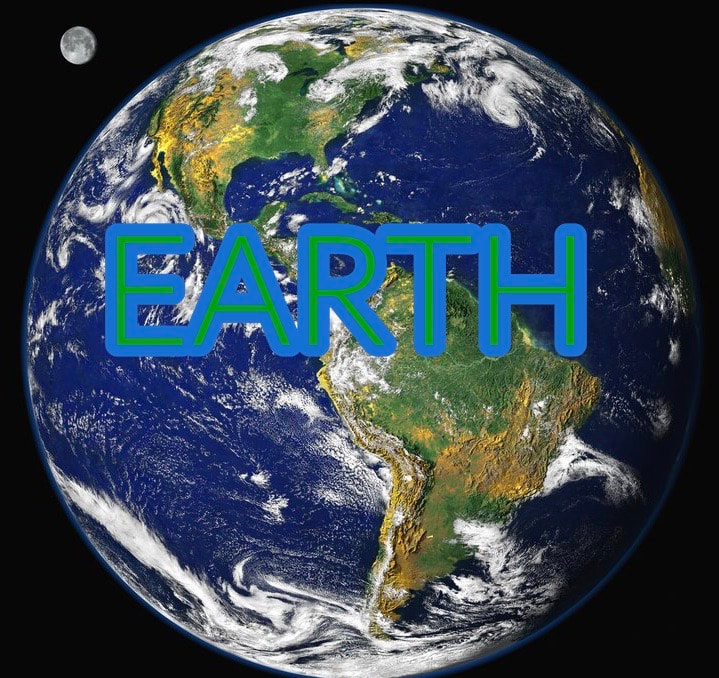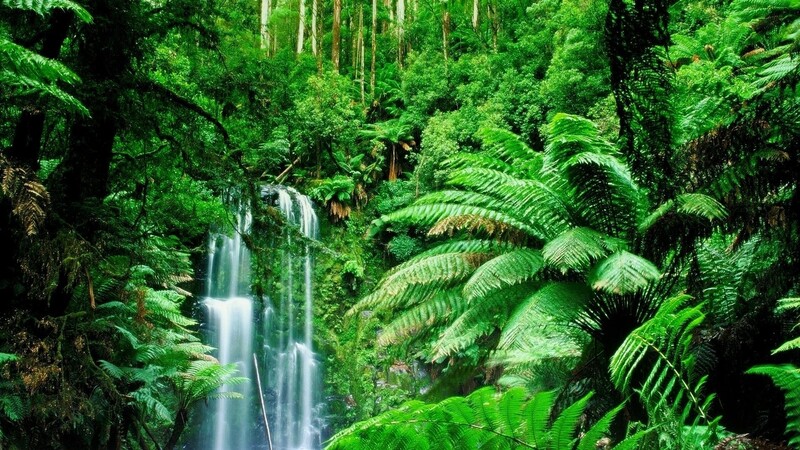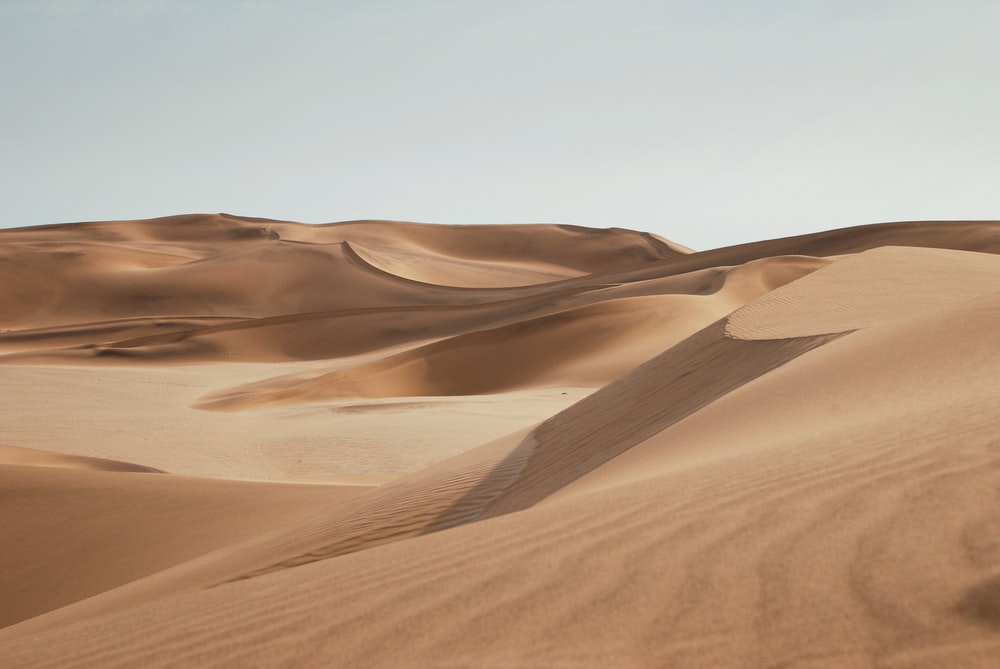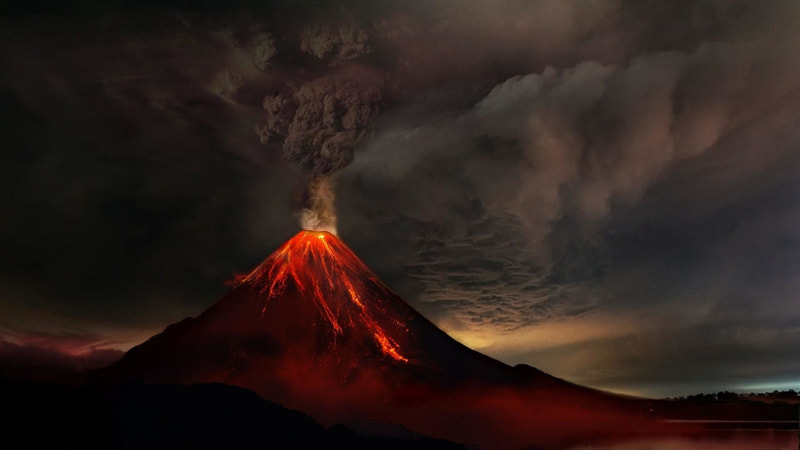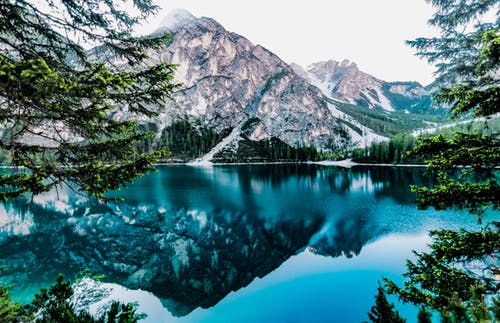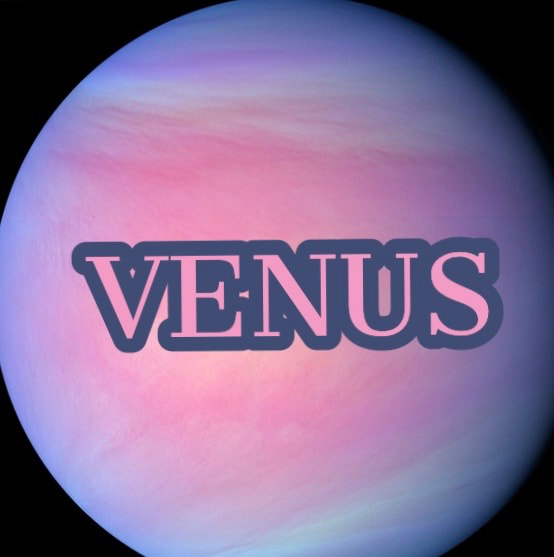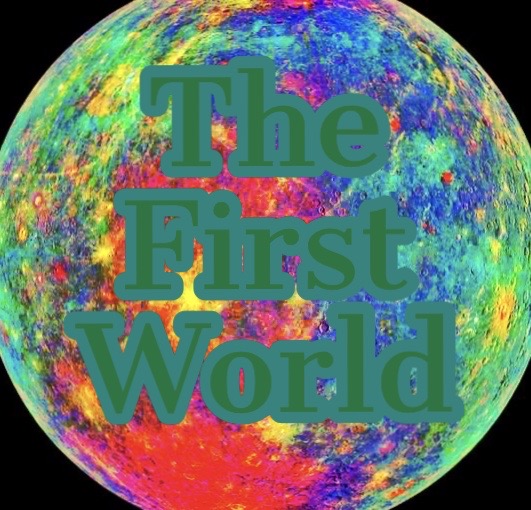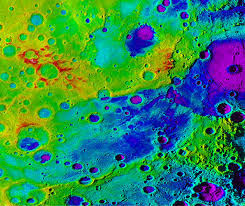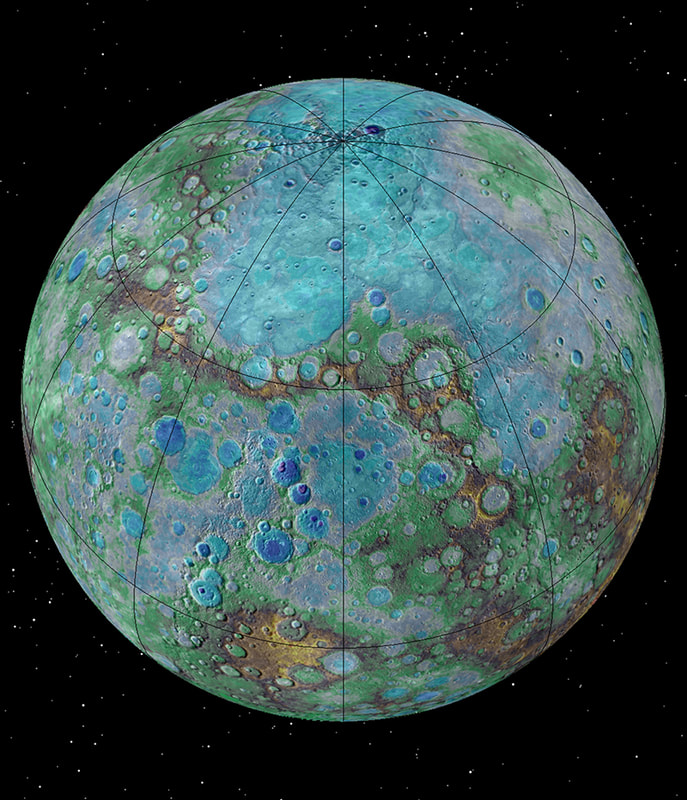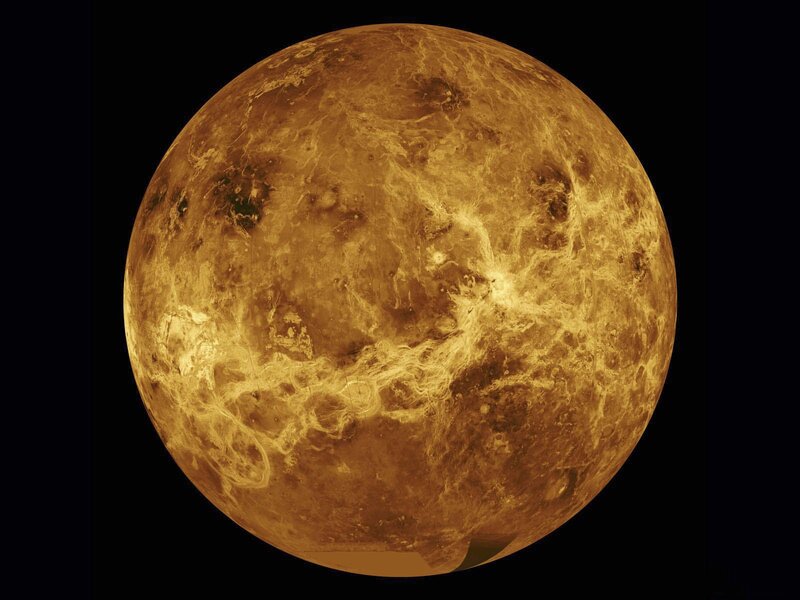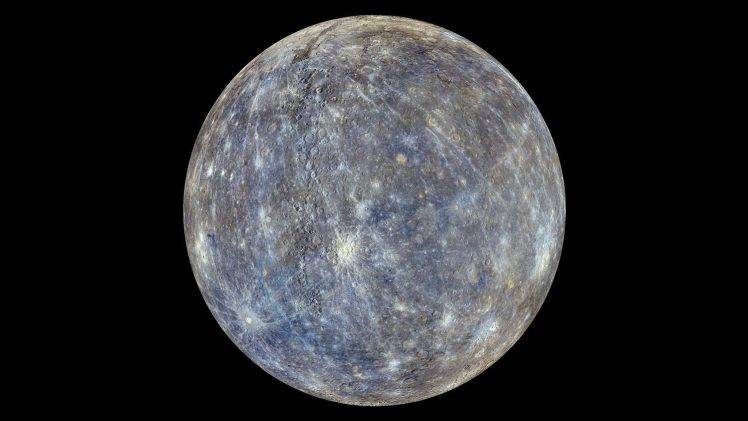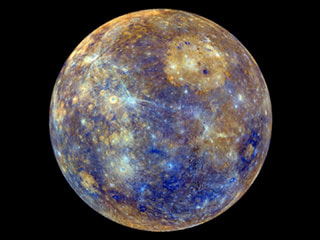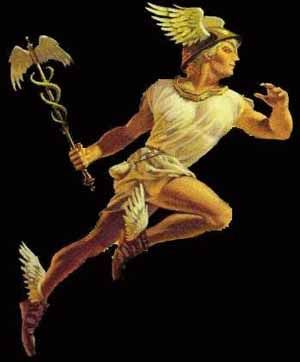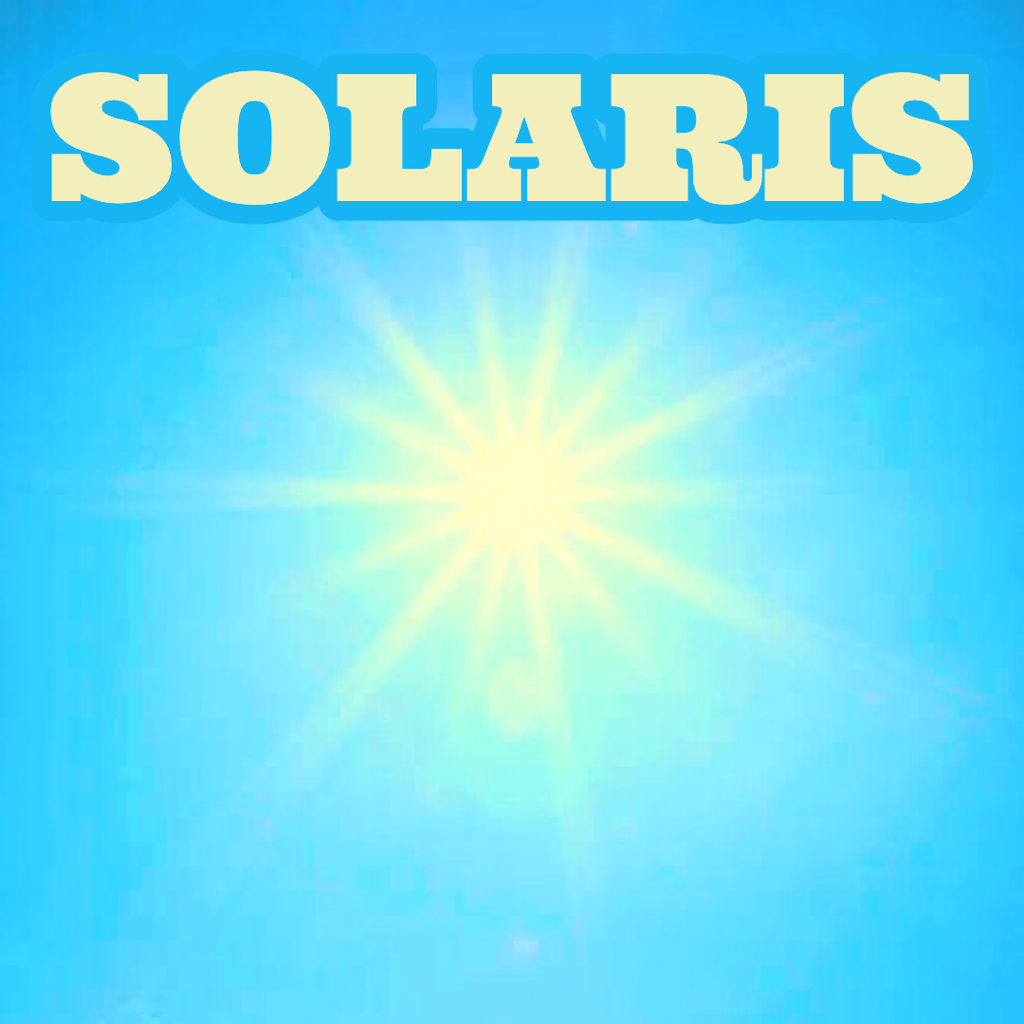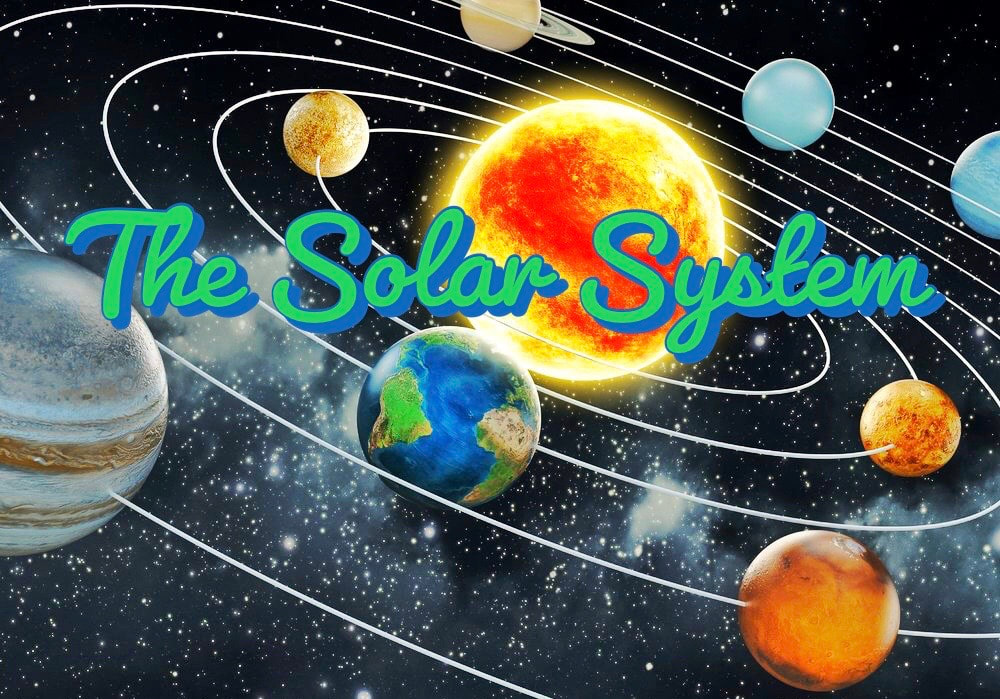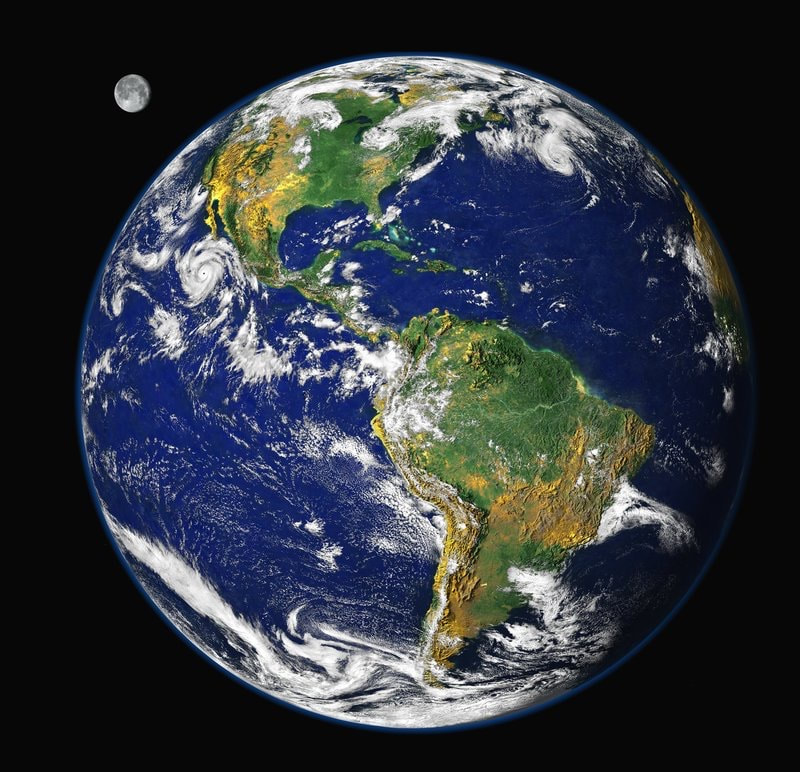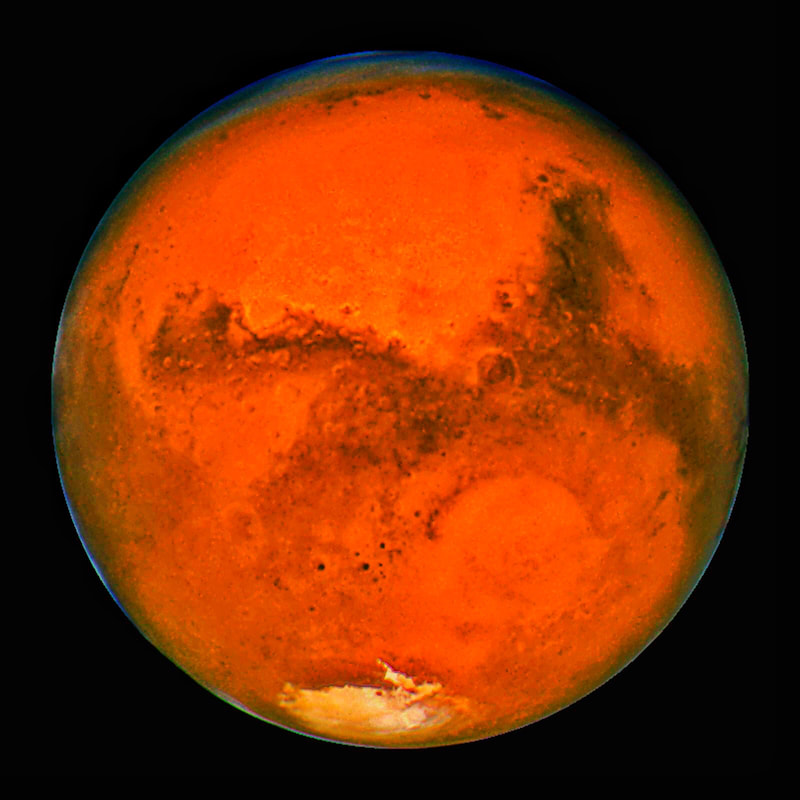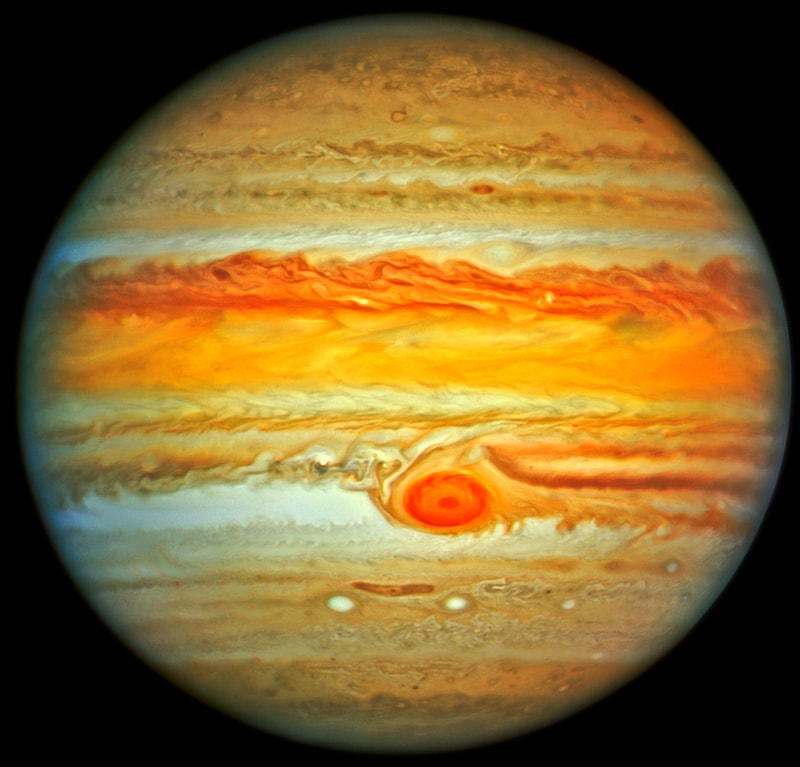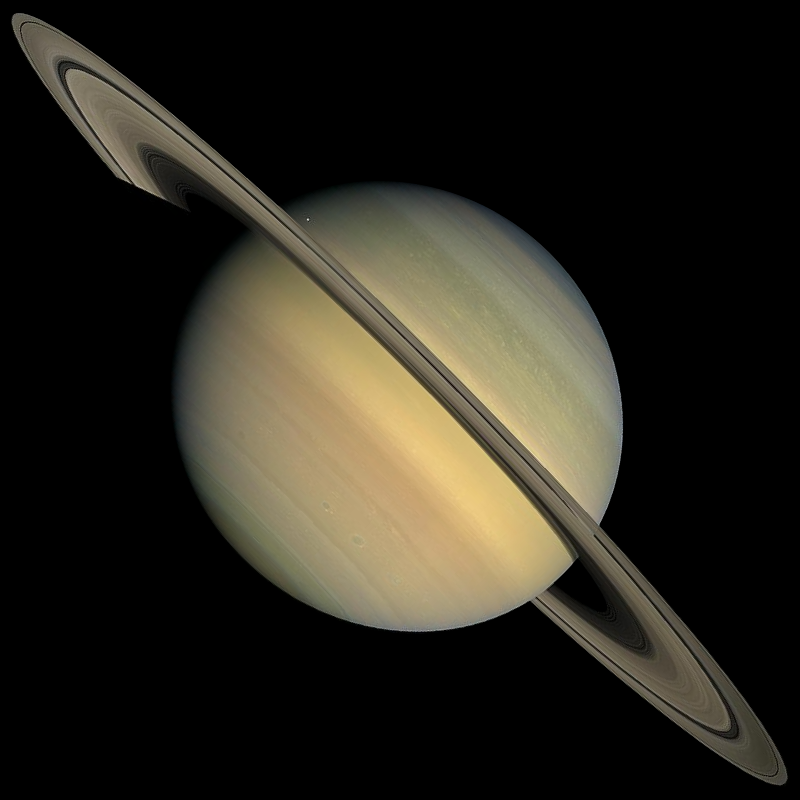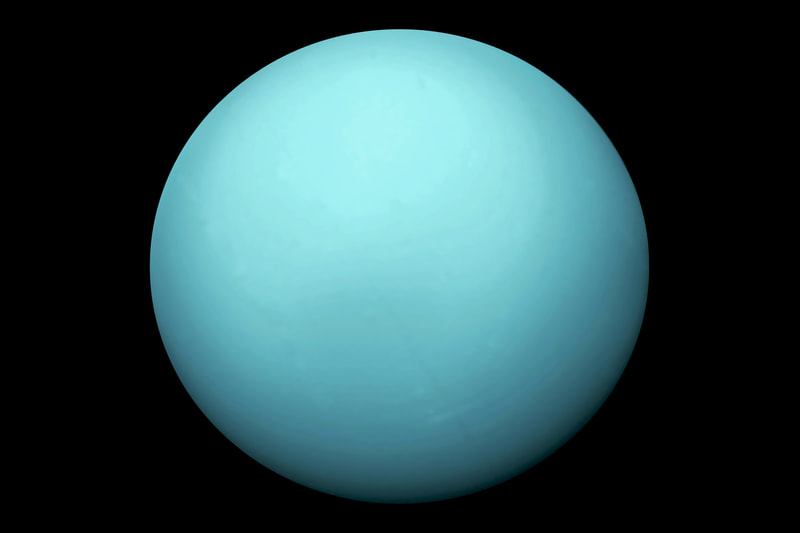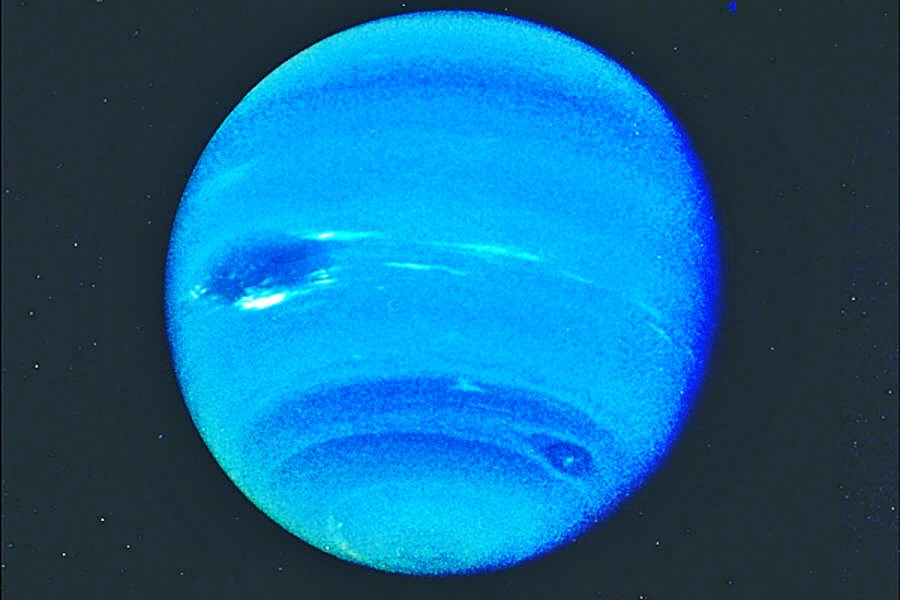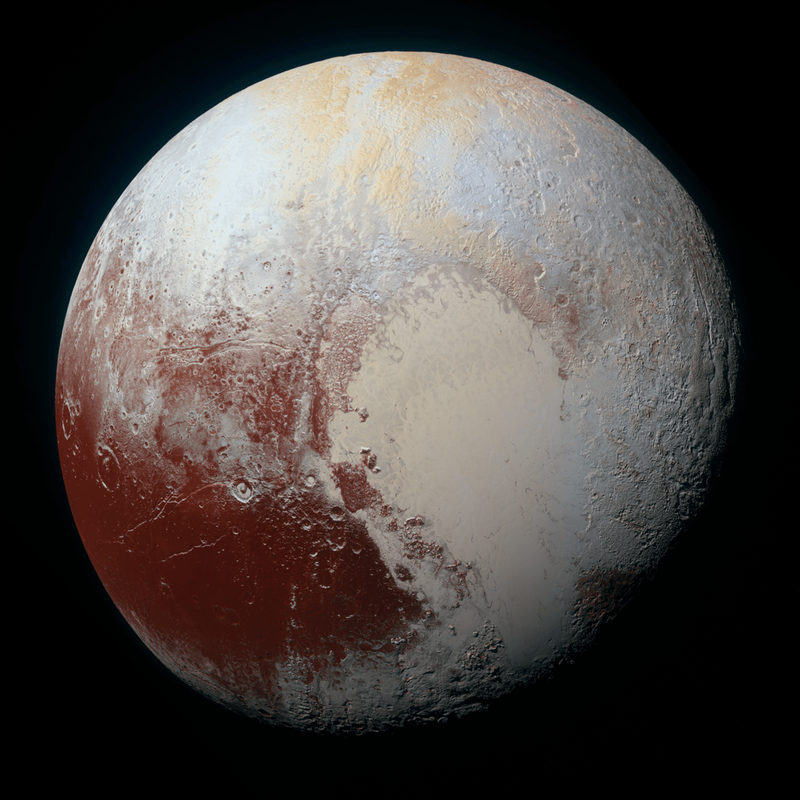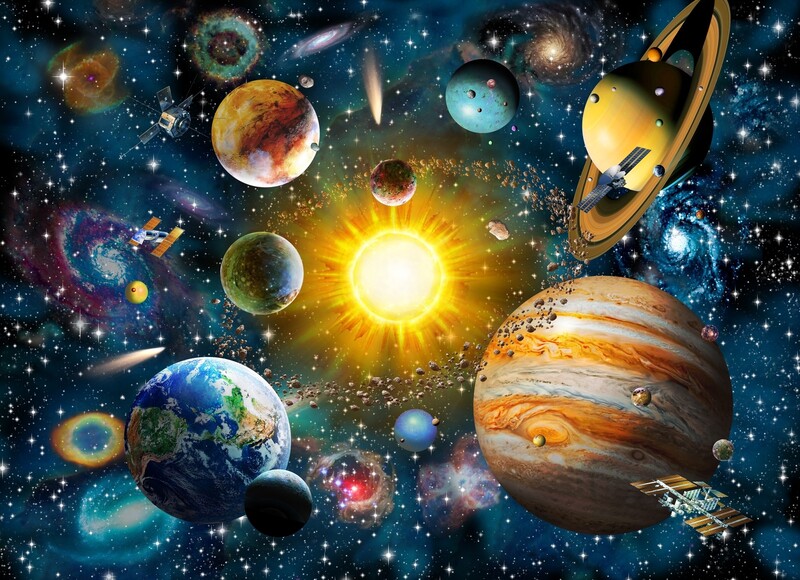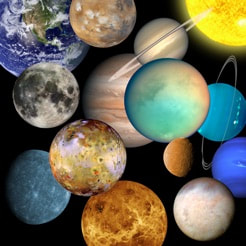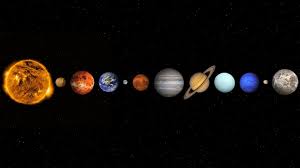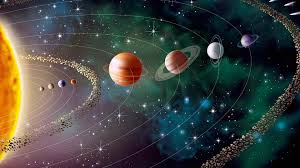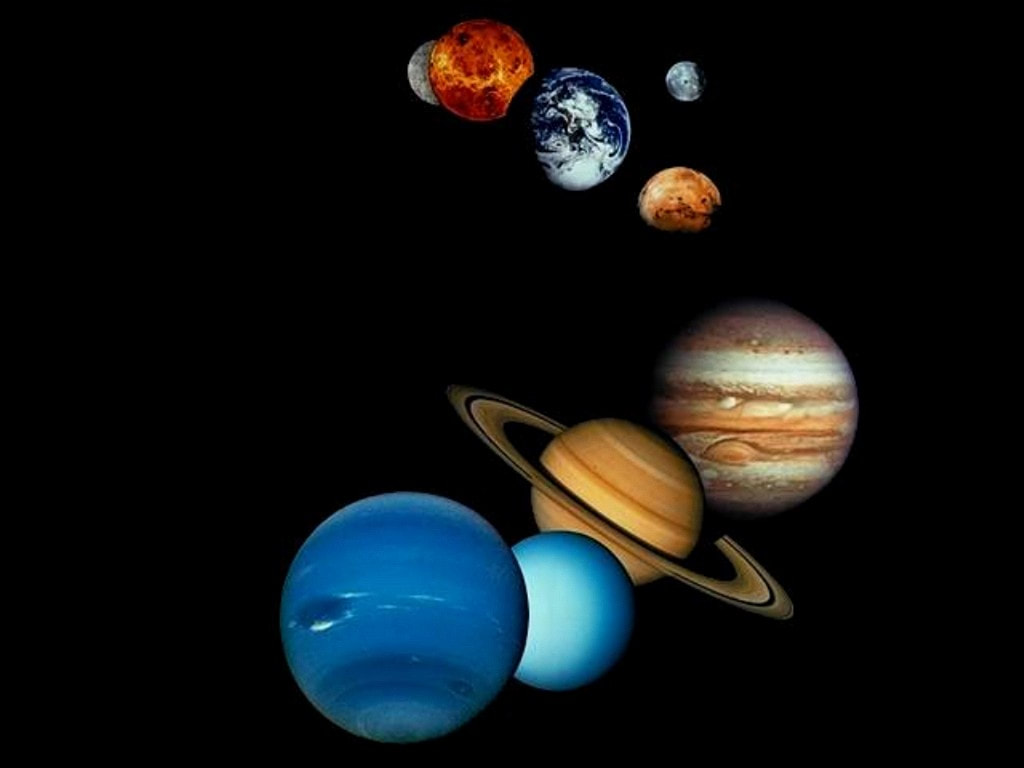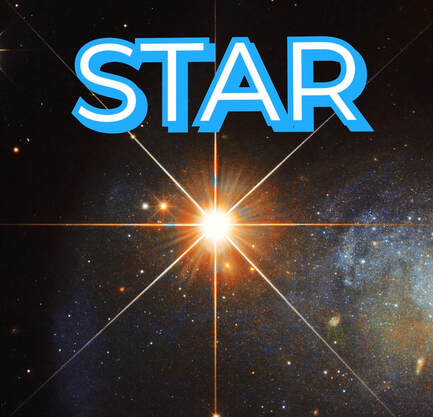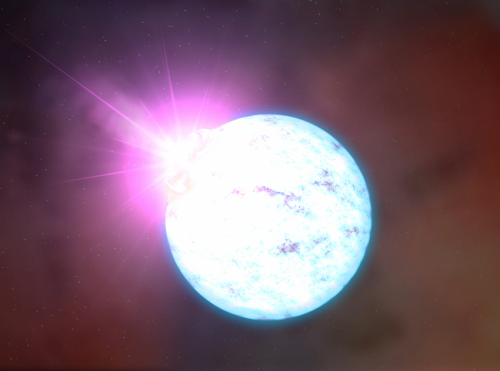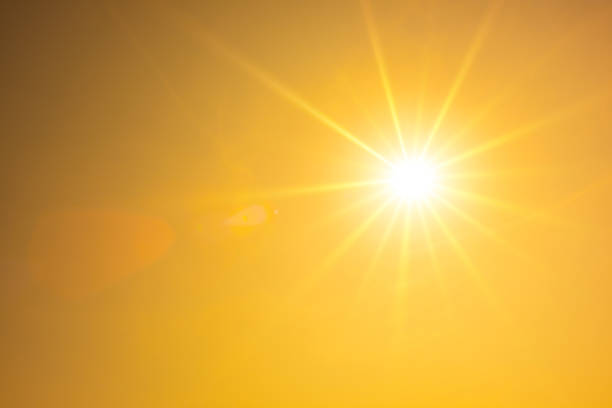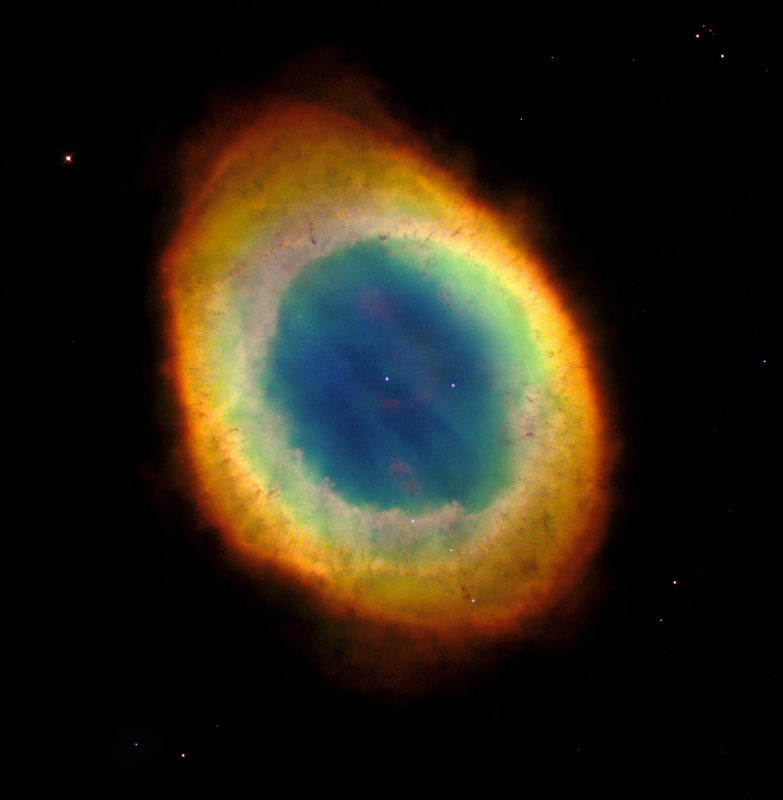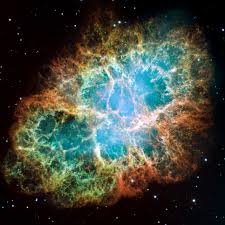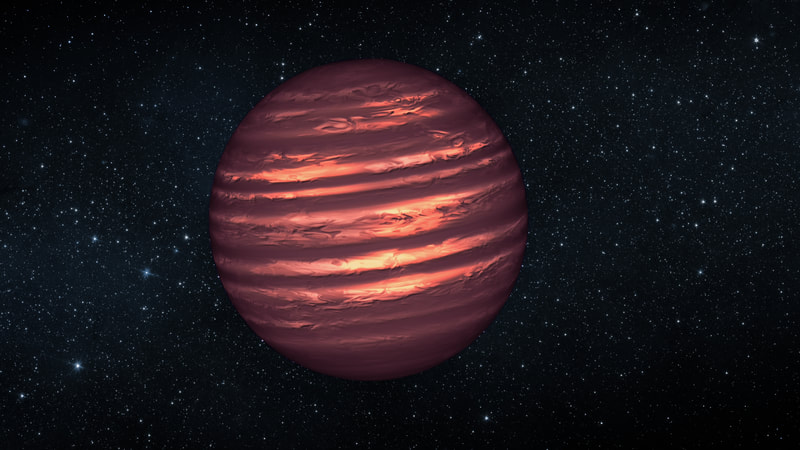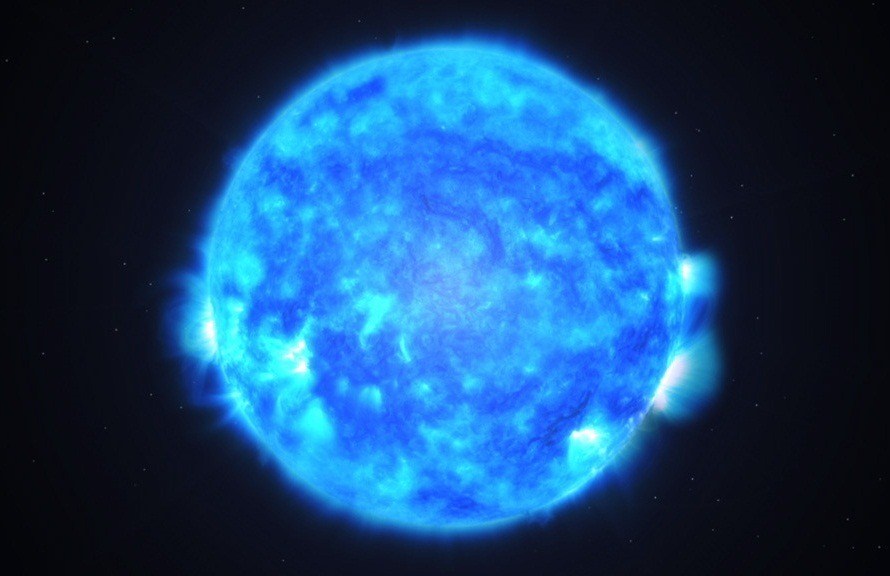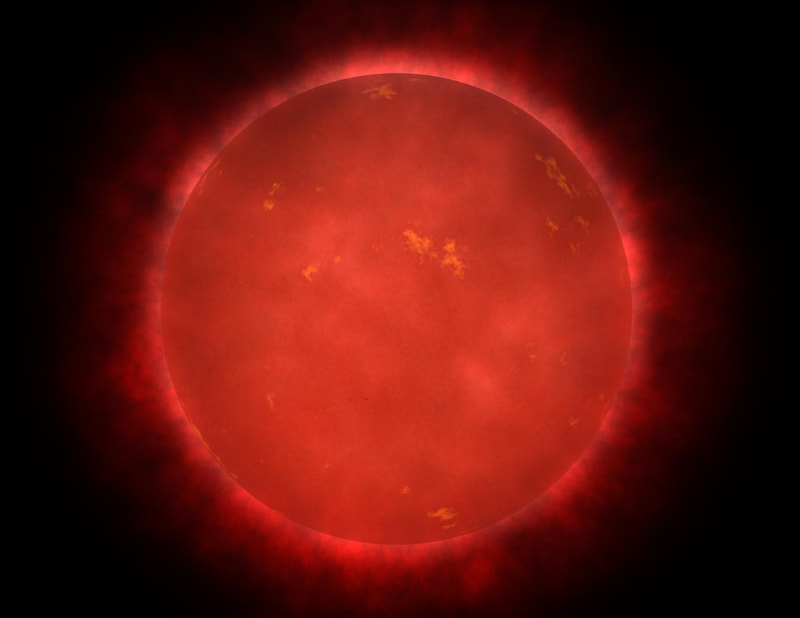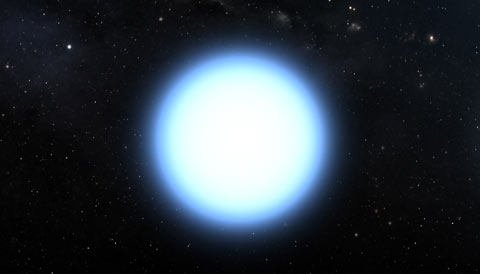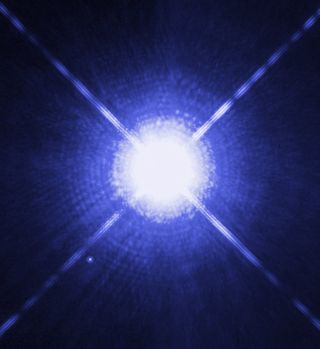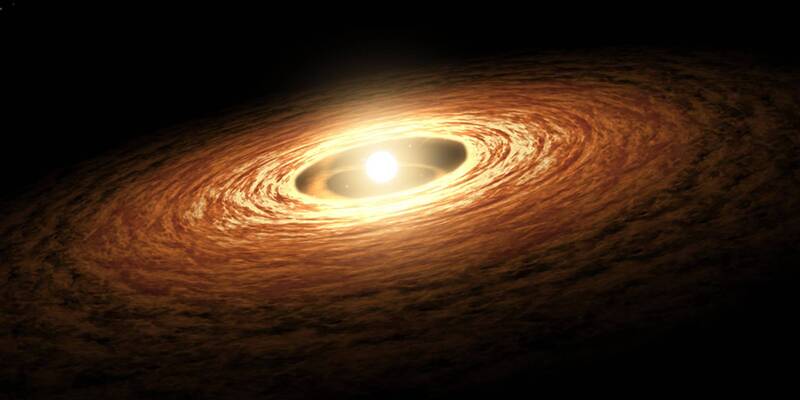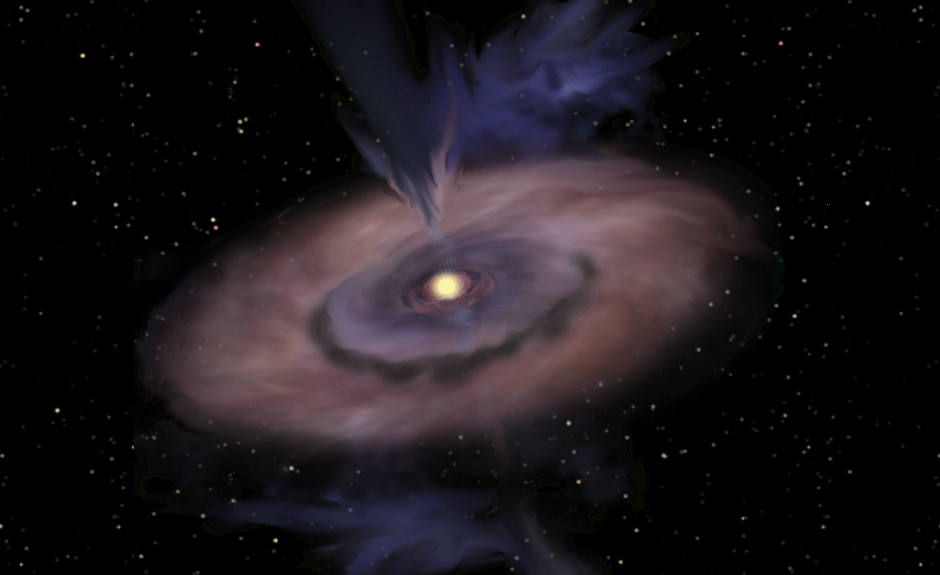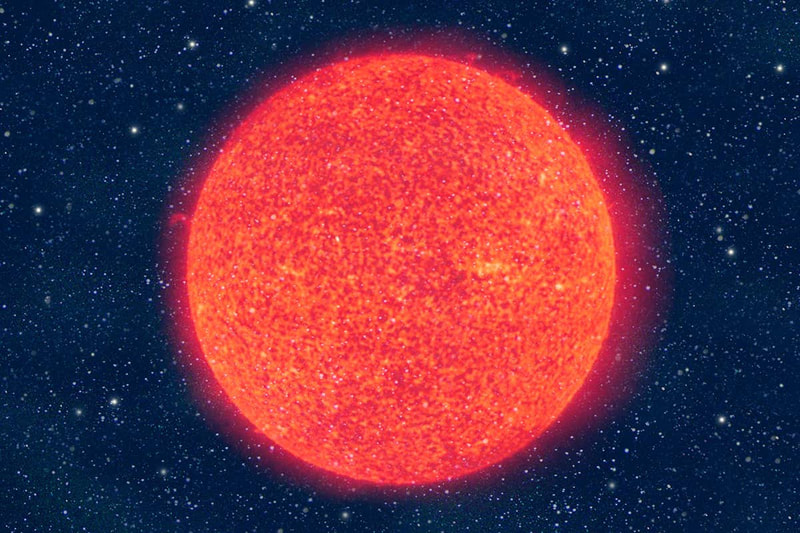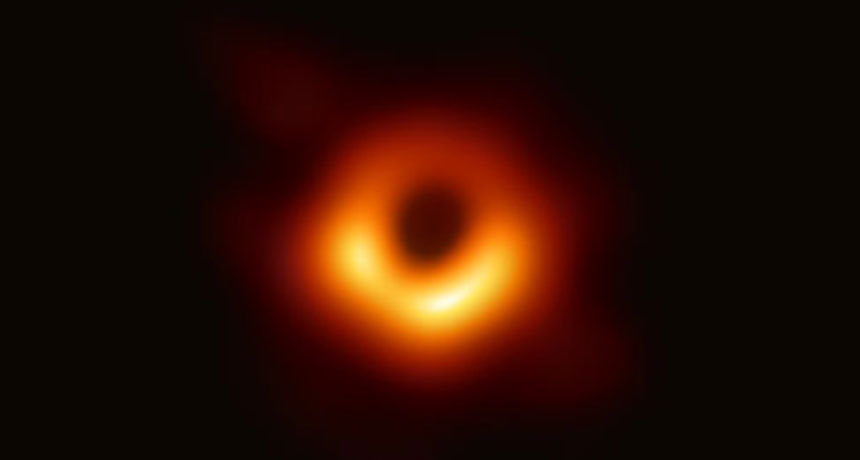|
Introduction
Earth, The Aloha World. The planet with something we seem to be find anywhere else in The Universe, Life. No where else in The Universe have people been able to definitely say, there is complex life on that planet. We have found planet that may contain life, but we do not know for sure. For now, Earth is the planet of Life. The Start of Earth The Earth is 4.543 Billion Years old. Just like all Rock Worlds, Earth was formed when Gas and Dust came together due to the gravity and formed a spherical rock that revolved around The Sun. In the beginning Earth was a hot molten rock that could not support life like it does today, The Primeval Earth. Eventually however, The Earth would cool down to temperatures that are more recognizable in Today's World. Life on Earth When Earth cooled down enough, life began to formed. At first simple single-celled life forms like Amebas were born. Eventually though, more complex life forms were born, like Dinosaurs and Fish and Birds and eventually Humans. Today on Earth, there are about 8.7 million species of living things on Earth. Earth Facts The mass of The Earth is 5.972 X 10^24 Kilograms. The Earth is 92.96 Million miles from The Sun. 70 perfect of the Earth's surface is covered in Water. Conclusion The Circle of Life on Earth is much like The Circle of Life in The Universe. Things die and things are born in its place. It's is thought that, how we live here reflects a lot of what goes on out there. We are all a part of The Universe, so this is totally normal, we are what we are a product of and as star are born, live and die, we all too do the same on Earth.
0 Comments
Introduction Venus, a hot rocky planet is the second closest to The Sun. Venus is in the middle of both Mercury and The Earth. It's old, it's beautiful and it will make burn you if you touch it, Venus, The Second World A close up of The hottest planet Venus is 4.503 Billion years old, it formed much the same way Mercury did, a large amount of gas and dust, falling under the weight of gravity in order to become a big rock that revolved around The Sun today. A year on Venus looks a lot more like a year on Earth than Mercury does, lasting 225 Earth Days. The Days on Venus however, are still very long and is still longer than a year, but not by much. A day on Venus is 243 Earth days. It's days are actually longer than Mercury's day, which are 176 Earth Days. This makes Venus very hot, hotter than Mercury in fact which is closer to The Sun than Venus is. On average Venus is 864 Degrees Fahrenheit or 462 Degrees Celsius while Mercury is 801 degrees Fahrenheit. Why s this however? This is can be chalked up to the longer days, however, Venus is farther away from The Sun than Mercury, so how can it be hotter? It's hotter because of its atmosphere. Venus's atmosphere acts as a heat vacuum, sucking in and containing the heat from The Sun, making Venus way hotter than Mercury could; Mercury doesn't even have an atmosphere, it never stood a chance in beating Venus in this bout. The Roman goddess Venus Venus receives its name from The Roman goddess Venus. Venus is the goddess of Love, Sex, Beauty and Fertility. Venus is the only female named planet in The Solar System. It was named Venus because of its brightness, illuminated brighter than the five other planets known at the time of it's naming. Venus's greek equivalent was Aphrodite the Greek goddess of Victory, fertility and prostitution. Conclusion Venus is the hottest planet in The Solar System. Venus proves that just because thou art closer to something hot, doesn't mean thou art necessarily the hottest object there is. It takes a lot more than proximity to The Sun in order for a planet to be hot. Atmosphere and other factors can attribute to the surface temperature of a planet and without an atmosphere, the temperature of a planet can drastically change. Venus is a hot planet, and it has its atmosphere to thank for that. MercuryIntroduction
Mercury, The First World in The Solar System. The planet that is closest to The Sun. It's years are short but it's days are not.Mercury, The hot rock of speed and mythological legend. Mercury, The First World. The First World's Start Mercury hath been around for 35.98 Million Earth Years. 4.5 Billion years, The gas and dust that would go on to become Mercury was pulled in together by gravity. Today that gas and dust is a solid rock known as Mercury. Mercury's Unique qualities Mercury's close proximity to The Sun makes its years very short relative to The Earth, only lasting 88 Earth days. To put that in perspective a typical University semester is 75 Earth days. It's days must be very short, right? Strangely, no! A day of Mercury is 176 Earth days. That's right, a day of Mercury is longer than a year on Mercury. So it revolves around The Sun faster than it rotates all the way around, because of this, Mercury's Days are Extremely Hot and Mercury's Nights are Extremely cold. During a Day on Mercury, Mercury's surface temperature can reach 801 degrees Fahrenheit or 427 degrees Celsius. Mercury's surface temperature at Night can be negative 290 degrees Fahrenheit or negative 180 degrees Celsius. Mercury is a weird planet by Earth's standards. The Roman god Mercury The First World received its title from The Roman god Mercury, Mercurius. Mercury, in mythology, was known for being the god of shopkeeping and merchants, travelers and transporters, & thieves and tricksters. The planet like The Roman god is known for it's/his speed. The Roman god Mercury, like it Greek equivalent Hermes, was the messenger of the gods. Conclusion Mercury is a strange world that flips our very notion of days and years on it's head. It proves that The Universe does not conform to Man's set notions of time and that we shouldn't be so narrow in thought when we study Space. Space is not always what we see and when we study Space, we should consider all possibilities, for the weirdest most unlikely solution, may be the correct answer. the sunIntroduction The Sun, The center of The Solar System. The Power of The Solar System, The Super Power to be honest. Without The Sun, there would not be The Solar System, no Mercury, no Neptune & no Earth which means, no us. The Solar Power from The Sun gives us life. No Sun, No life. Where did our Sun come from however? What are its origins? Let's see the life of The Sun. The Origin of The Sun The Sun is 4.603 Billion Years old. In the beginning The Sun and all the planets in The Solar System were a molecular cloud of gas and dust. Around 4.57 Billion year ago, this molecular cloud collapsed under the weight of its own gravity. The Sun was now a protostar. The Sun would remain a protostar for 100,000 Years. The Next Stage for The Sun The Sun after being a protostar for long while was ready for the next step. The Sun became a Tauri Star. The Sun was a berserk hot powerful star that roared solar winds across the primeval solar system. This stage is where many of the things that are in The Solar System today were created. The Sun's Tauri Star phase lasted for a scant millions of years. The Main Sequence of The Sun Now The Sun is all grown up. It is a full star an adult star to put it simply. The Sun is now a Main Sequence Star. This happened after The Tauri Star phase of The Sun ended. It stabilized and is now a regular Hydrogen and Helium producer colossal ball of sweltering plasma. The Sun Today make up 99.86 Percent of the mass in The Solar System, that's insane considering how big Jupiter and Saturn are alone. That makes the Earth seem small and insignificant in the grand scheme of things. In fact over one million Earths can fit inside of The Sun! The precise measurements of its mass is 1.989 X 10^30 kilograms. That's a ton of zeros! The Sun also has a radius of 432,170 Miles and it's 92.96 Million Miles away from Earth! Just to put that in perspective a Marathon race is 26.2 Miles, and the distance from New York City to Rome, Italy is a measly 4279 Miles. That's a long race to The Sun. Plus once you'd get there you would die. The surface temperature of The Sun is 5,778 degrees Kelvin which is 9941 degrees Fahrenheit and 5505 degrees Celsius. The Sun is one big scorching bright far-way over-powering element creating ball of flaming plasma. The Future of The Sun Our Sun is big and powerful now, but guess what. It's only going to get bigger. The Sun will eventually grow to be even greater in size than it is now. Our Sun will no longer be a Sun-Like Star, ironic to say the least, it will have become a Red Giant. It will be so large that the current position of The Earth will be inside of it. At this state in our Sun's life, it's days are number, it will have about 120 Million years left. Our Sun will be a gigantic big red ball of death. RIP The Sun The death will begin when the inner cores Helium begins to deteriorate and start to flash from The Sun in big powerful bursts. The Sun will begin to wane for 200 Million years and will eventually cool into a White Dwarf. The White Dwarf Sun will remain for Trillions of Years before turning off the light and becoming Black. The death of The Sun. Conclusion The thought of the thing that gives us Aloha "The Breath of Life" dying paints a meek and melancholy picture. This should not make us mournful however, for first of all, this is trillions of years away, the universe is only 13.8 Billion Years old, so this is farther away than the age of The Universe, a very long time. Also The Universe has a circle of life just like us humans. When one thing dies, something else is born. A new sun will be born somewhere in the universe and the life of the stars will continue on. Do not let the death of The Sun get thee down, for death is just a part of life and The Universe will roll on. Our Sun may die, but there are more just like it than grains of sand on Earth. That's something to be amazed and hopeful about. The Universe will continue to live on eon after eon, and so will the stars in sky. Introduction
The Solar System is system of Planets, Asteroids, Moons, and more orbiting the Sun. There are many like ours, however, this discussion will be on our own for the most part. The planetary order traditionally goes Mercury, Venus, Earth, Mars, Jupiter, Saturn, Uranus, Neptune & Pluto. Various planets have moons like Jupiter & Earth. Mars and Jupiter are separated by a colossal ring of rocks known as The Asteroid belt. Pluto has been classified as a dwarf planet, due to its small size and other factors. The Solar System is surrounded by a huge cluster of space dust known as the Oort Cloud. The Universe is vast and complex but that does not mean that The Solar System is small and simplistic. The Solar System itself has many unique things about it. It is worth exploring. The Age of The Solar System The Solar System is 4.571 Billion years old. The Universe, for scale, is only a little over three times the age of The Solar System. The Solar System is old, but it has a long way to go, for a star can live to be older than the universe currently is; 15 billion years (The Universe is 13.8 Billion Years old). Plus when a Sun-Like Star dies, a planetary nebula is born, this means in theory that The Solar System could be around indefinitely, except it wouldn't be a solar system but just a planetary system since there is not a star present. The Sun The Sun is 4.603 Billion Years old, older than The Solar System. This only makes sense since you need a Star in order for there to be a solar system. The Sun is the center of The Solar System. Everything in The Solar System revolves around The Sun, Heliocentric. It's the big boss & what it says, goes. Without The Sun, life on Earth, could not exist. A lot of the material in The Solar System comes from The Sun. In a way, The Sun is The Solar System. Mercury Mercury, the planet not the element, is 4.503 Billion Years Old. It is the closest to The Sun and has the fastest revolution around The Sun compared to all the other planets in The Solar System. It takes 87.97 Earth Days to make a complete orbit around The Sun. This is about Three Earth Months. Venus Venus is also 4.503 Billion Years Old. Venus is the hottest planet in The Solar System, due to its atmosphere, with an average temperature of a whooping 462 Degrees Celsius or 864 Degrees Fahrenheit. That'll burn the cookies in the oven and the house too. Earth Earth is 4.543 Billion Years Old. Older than both Mercury and Venus. Earth is the only known planet that supports life in Today's World. This is unique not just in The Solar System, but in The Whole Universe as far as we known now. Mars Mars is 4.603 Billion Years Old. Mars is a red planet and is believed to have once been a habitat for life itself. However, Today there is no life on Mars. One day it is believe that Mars will have life once more. Jupiter Jupiter is 4.503 Billion Years Old like Mercury and Venus. Jupiter is the largest of all the planets and can fit 1300 Earths inside it's boundaries. Jupiter is a planet made of gas and it is unknown if it has a solid core or not. So far Jupiter has 79 known Moons orbiting it while the Earth has one. Saturn Saturn is 4.503 Billion Years Old just like Jupiter, Mercury and Venus. Saturn is a gas giant like Jupiter. Saturn has gigantic rings orbiting it. Uranus Uranus is 4.503 Billion Years Old just like Jupiter, Mercury, Venus and Saturn. Uranus is a gas giant like Jupiter and Saturn. Uranus is tilted to where it's poles are East and West. Uranus has rings like Saturn but unlike Saturn's near Horizontal rings, Uranus's rings are vertical. Neptune Neptune is 4.503 Billion Years Old just like Jupiter, Venus, Saturn, Mercury and Uranus. Neptune is an ice giant. Neptune is a deep blue like the deep blue sea the Roman god Neptune who it was named after swam in. Pluto Pluto is 4.46 to 4.6 Billion years old. Pluto is the smallest planet in The Solar System. So small that it has been classified as a dwarf planet. Pluto has five moons. Pluto is the coldest planet with an average temperature of Negative 229 degrees Celsius or Negative 380 degrees fahrenheit; perfect place to store food, of course if you are willing to travel 2.66 Billion Miles to 4.67 Billion Miles to get to it. Conclusion The Universe is vast and has maybe unique phenomenons in it. The Solar System, yet small in scope to The Universe, has its own unique things about it that makes it worth exploring and studying for many eons to come. THe life of a starIntroduction
Stars are Awesome, Spectacular, Marvelous spheres of plasma in space. Living things on Earth see them every night and morning in fact; for our own sun is itself; a star. A star starts out as a cloud of bleak molecular gas. This states of things may remain for ages before one day, it collapses due to its own gravity. This may be triggered by a explosion nearby such as a Supernova or a comet. This is the beginning of a protostar. Protostar The protostar can be seen as a infant or baby star; not quite grown, but recognizable as a star. At this stage in a star's life cycle we see the beginning of rock formations known as planets. One can say that this is the start of a solar or planetary system. This era in a stars life last approximately one million years; short in astronomical terms. The universe being thirteen thousand & eight hundred times older than a million year old protostar. Tauri Star The next stage for the young star is the tauri star. A tauri star is born when a protostar stop receiving materials from it's gravitational pull. Now it is releasing a lot of energy; a kin to the baby realizes that breast milk is no longer on the menu; though I'm for certain that the two processes are quite different. Now the star is bright, and this is due to the energy from the gravitational pull of the materials falling into the adolescent star. This part of the star's life last about one hundred million years. Main Sequence Star Up next is the adult star, all grown up and ready to face the world, or worlds perhaps; introducing the Main Sequence Star . The Main Sequence Star comes in many sizes and colors and even temperatures. We have Red Giants, Brown dwarfs, Red dwarfs, Sun-Like Stars & Super Giants that are blue. This phase in a star's life is when it's a element-making juggernaut, pumping out many elements that power worlds like Earth. This is the longest phase in a stars entire life and it lasts around ten to fifteen billion years. That's older than the universe itself!!! A Main Sequence Star lasts a very long time so it's take awhile before what happens next. When the star meets its maker. Oh yes, even stars meet the grim reaper. The Death of a Star Now, many can happen during and after the death of a star. Some results quite beautiful actually. Sometimes Stars explode into Supernovas. Other times they become Supernovas and then collapse into Black Holes. There are times when it skips the whole Supernova steps and go straight to being Black Holes. A star can become a Supernova and then become a Neutron Star. A Neutron Star according to the Oxford Dictionary is "A celestial object of very small radius (typically 18 miles/30 km) and very high density, composed predominantly of closely packed neutrons. Neutron stars are thought to form by the gravitational collapse of the remnant of a massive star after a supernova explosion, provided that the star is insufficiently massive to produce a black hole." Sun-like Stars become Planetary Nebula then White Dwarfs after their time has passed. A Red Dwarf will become a white dwarf. Finally brown dwarfs is the only one who doesn't change; It was born a brown dwarfs, it dies a brown dwarf. There is an array of different outcomes for an array of stars. However, as all things in The World, the star does eventually kick the bucket. Conclusion This fact should not bring sadness however, for the circle of life does exist for stars too. Remember in the beginning, the birth of a star can be caused by a Supernova, a Supernova comes from a dead star, therefore one stars death could trigger the birth of many more stars. The life of stars goes on. This is true in life too. People and animals all get old and eventually pass away, but we leave behind offspring to continue our lives for us and in our predecessors we live on forever. |
About'Astronomy' page explores aspects of Astronomy, Philosophy, Spacelore and other topics about The Universe! Categories
All
Search
|
